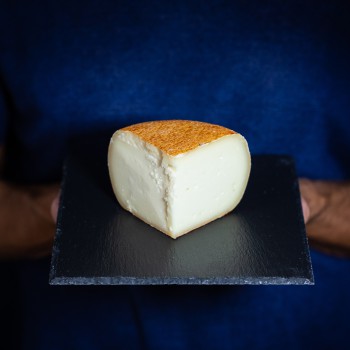Ferragosto is approaching, whip out the picnic baskets! What are we taking? All quick preparations to make and practical to carry and eat - dishes and cutlery are hardly needed! The secret? The best Italian cured meats.
Cheese production in Italy: North VS South
Italy’s cheese-making tradition has no equal in the world. Apart from quantity (more than 480 different kinds of cheese), it is our cheese’s quality that is second to none. PDO, PGI and PAT (Traditional Agricultural Food Product) labels certify that all Italian cheeses stand for deliciousness and tradition.
However, when we talk about Italian cheeses, we usually fail to take into account the great variety of climates and landscapes of our country. From Marmolada mountain, through Po Plain and the gentle Chianti hills, to Pantelleria; from the Venetian Lagoon to sun-kissed Sicily – Italy is one country, but it actually has many different environments.
Different climate, different vegetation and, hence, different rearing techniques and different milk production methods lead to cheeses with unique features.
From alpine pastures to Northern plains
Northern Italy stretches from the Alpine mountainous area to the Po Plain.
Let’s start by talking about the alpine area, peaking at above 2,500 m and recording temperatures that are well below zero degree for a long part of the year. It is obvious that animals are kept inside the stables in the winter.
However, as the weather becomes warmer, herds move to higher pastures for mountain pasturing. Have you ever tried cheese from alpine pasture? That’s the cheese made from the milk that was obtained between late May and mid-September, as cows are left to naturally graze and feed on fodder plants and alpine flowers.
Alpine pastures are key for animal rearing in this area, and give an exceptional flavour to the cheeses, thanks to their scents. Two cheeses stand out among many: PDO Fontina from alpine pasture and PDO Castelmagno D’Alpeggio from alpine pasture, which is also a Slow Food Presidium.
Apart from cheeses, another milk by-product is traditionally made in this area: butter. Cheeses are called semi-fat, when they are made from milk which is skimmed to obtain the cream to make butter.
PDO Asiago and PDO Quartirolo Lombardo are two great examples.
And what about marbling? Marbling can only happen in naturally fresh and particularly moist environments. PDO Strachitunt and PDO Gorgonzola, mild and spicy alike, are two great Italian cheeses: unique taste, full-rounded flavour and unmistakable scent.
Let’s move down towards the Po plain and let’s tackle a new exceptional cheese type: washed-rind cheeses.
The cheese wheel’s outside layer is sponged with a solution of saltwater brine to keep the surface moist and prevent the development of unwanted moulds. This, however, encourages the development of micro-organisms on the surface of the cheese, which give the rind a special colour. The aging process works from the outside in, developing in the rind and moving towards the centre of the cheese. One example is PDO Taleggio cheese: raw milk, soft, tender and melt-in-mouth paste, with a truffle aftertaste.
Central Italy, the home of sheep
Let’s move down to Central Italy. Less pastures, less cows, more sheep. Italy is, as a matter of fact, the second largest producer of ewe’s milk in the world.
Here it is all about transhumance. Herds move to the hills in the spring and in autumn, following the tracks, called tratturi, previously left by other sheep; then, they spend the winter in the plain and down to the coasts. When we talk about Italian cheeses from Central Italy, we have to mention Pecorino cheese.
Pecorino is always delicious, whether it is Tuscan, Roman or Sardinian, young, semi-aged or aged. Other ingredients, such as truffle or red hot chilli pepper, can be added to the cheese, and several different aging techniques can be implemented, involving the use of grapeseed, aromatic plants or cocoa.
In the region of Emilia-Romagna, we can also find PDO Parmigiano Reggiano cheese. This cheese, which is an international superstar, can only be manufactured in a very restricted area. Parmigiano has only been made in this area, by implementing specific techniques, for the past thousand years. Why? Local fodder, grass and hay are absolutely essential for the development of the microbial flora.
Southern Italy and cheeses with a stretched curd
In Italy’s Southern regions, the cheese curd is usually stretched. Cheeses with a stretched curd are Mozzarella, Scamorza, Caciocavallo and Provolone. Caciocavallo Podolico and Caciocavallo Silano are perfect example of cheeses with a stretched curd.
This technique is unique, since the curd is plunged in hot water; the paste becomes elastic, meaning that it can be handled and stretched without breaking. Once this step is over, the cheese is left to cool down in water and is then salted by plunging it in brine.
As we have seen, climate and vegetation greatly affect cheese manufacturing. Then, technique, talent, skills and passion are also required. The best techniques are still handmade and entail the use of exceptional ingredients combined with the cheesemaker’s skills.
Here you have a small overview that shows how varied cheese production techniques in Italy can be; they are, nonetheless, equally excellent, resulting in Italian cheeses that best embody our territory. Being able to taste these delicacies is an actual privilege.




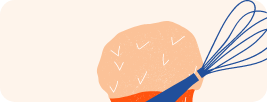


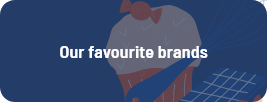


.jpg)
